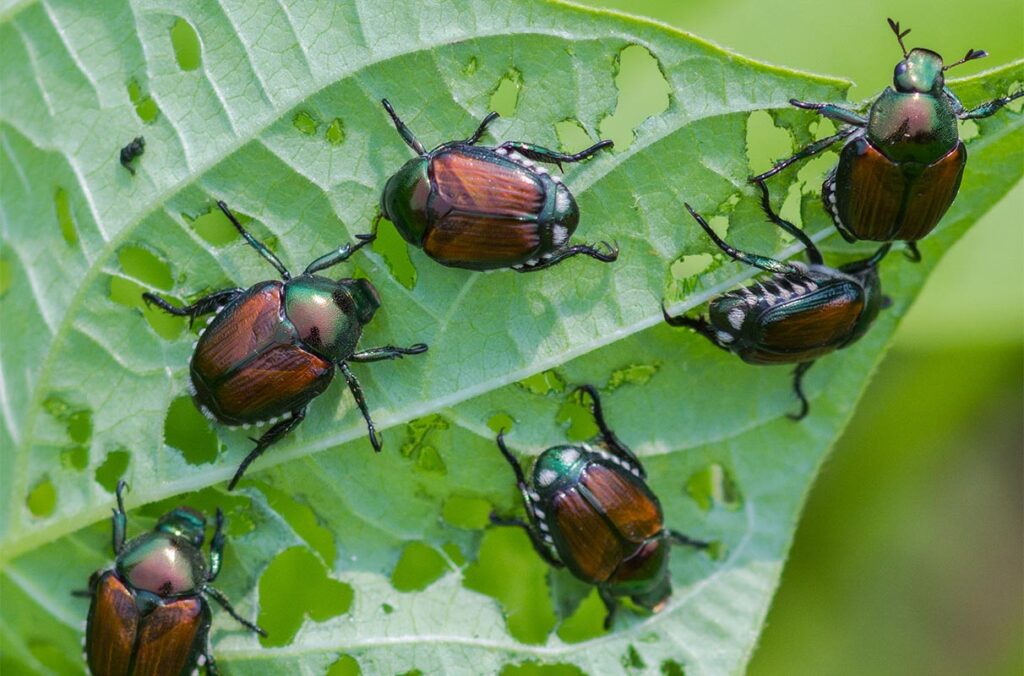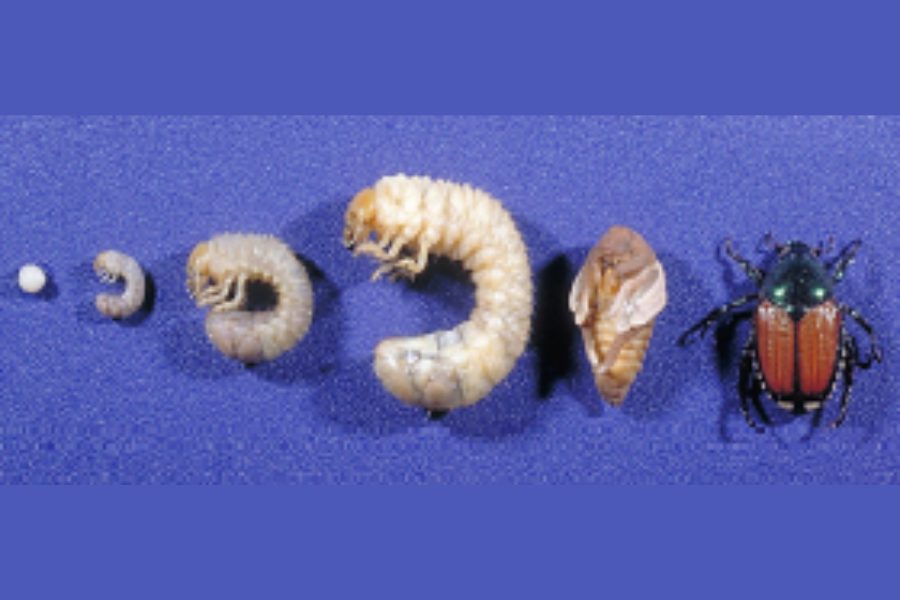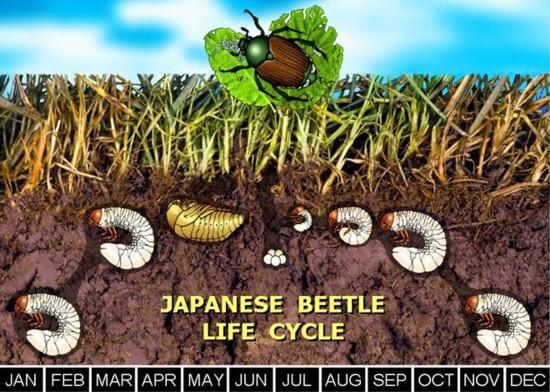The Japanese beetle, Popillia japonica, has become a significant pest in North Carolina, posing a threat to both ornamental plants and agricultural crops. Originally brought to the United States in 1916, this invasive species has spread throughout the eastern states, proving to be a challenging adversary for homeowners, farmers and gardeners alike. With its voracious appetite and ability to rapidly reproduce, the Japanese beetle has become a major concern for the horticultural industry in North Carolina.
One of the main characteristics is their metallic green and copper-colored exoskeleton, making it easily recognizable to those familiar with its presence. These beetles feed on over 300 different plant species, including but not limited to maples, elms, birches, and willows. The damage caused by their feeding can result in defoliation, stunted growth, and even plant death if left unchecked. This has led to significant economic losses for farmers and nurseries in the state. Efforts to control the Japanese beetle population in North Carolina have included the use of pesticides, biological control agents, and cultural management practices. While these methods have had varying levels of success, the resilience of the Japanese beetle has made eradication a challenging task. Vigilance and proactive measures are essential for minimizing the impact of this invasive pest on the state’s ecosystems and agricultural industry.
Identification and Life Cycle
Characterized by their striking, iridescent green bodies and coppery-brown wing covers, adult Japanese beetles are a common sight in many gardens and landscapes. Measuring about 1/2 inch in length, these beetles are easily recognizable due to the distinct white hair tufts adorning the sides and rear of their abdomen. This unique feature aids in their identification and sets them apart from other beetle species.
Although the adult Japanese beetles are eye-catching with their shimmering colors, it is their larvae, known as grubs, that often cause the most damage. These white, C-shaped creatures reside in the soil, where they feed on the roots of various plants and grasses. This feeding behavior can lead to significant damage to lawns, gardens, and agricultural crops if left unchecked.
The life cycle of Japanese beetles begins with the grubs overwintering in the soil. As the weather warms up in late spring to early summer, the grubs pupate and transform into adult beetles, which typically emerge in June and July. Once they reach adulthood, these beetles engage in voracious feeding on foliage, flowers, and fruits, causing significant defoliation and damage to plants. The result is often the tell-tale sign of skeletonized leaves, where only the veins of the affected foliage remain.
To make matters worse, adult female Japanese beetles lay eggs in the soil, which hatch into grubs and continue the destructive cycle. This perpetuation of the beetle population can lead to escalating damage year after year if not properly managed. Therefore, it is crucial for gardeners and farmers to be vigilant in their control efforts to prevent widespread infestations and preserve the health of their plants.
Impact on Trees and Fruit Orchards
Japanese beetles have a significant impact on both trees and fruit orchards in North Carolina. Their presence can lead to considerable damage, affecting the health and productivity of various plants.
Trees: Japanese beetles are known to feed on over 300 plant species, including many common trees such as maples, elms, birches, and willows. The beetles skeletonize the leaves, leaving only the veins, which not only affects the aesthetic value of the trees but also their overall health. Repeated defoliation can weaken trees, making them more susceptible to diseases and other pests.
Fruit Orchards: In fruit orchards, Japanese beetles are particularly detrimental to crops like apples, peaches, cherries, and plums. The beetles feed on both the foliage and the fruit, causing direct damage and reducing yields. For example, they can chew irregular holes in fruits, sometimes consuming them almost entirely. This feeding behavior not only affects the marketability of the fruit but also its quality. Additionally, the stress caused by beetle feeding can make fruit trees more vulnerable to other issues, such as fungal infections.
Management of Japanese beetles in these environments requires a multifaceted approach. Cultural practices like choosing less susceptible plant varieties, chemical controls using insecticides, and biological controls involving natural predators are all part of an integrated pest management strategy. For detailed recommendations and up-to-date guidelines, resources from NC State Extension provide valuable insights.
Management Strategies
The management of Japanese beetles in North Carolina necessitates a multifaceted approach, combining cultural practices, chemical controls, and biological methods to mitigate their impact.
Chemical Control: Insecticides containing active ingredients such as carbaryl, imidacloprid, bifenthrin, and acephate are commonly employed to control Japanese beetle populations. However, it is imperative to adhere to label instructions meticulously to minimize harm to beneficial pollinators. Restrictions on use include:
- Timing: Spraying should be done in the late evening when pollinators are less active.
- Weather Conditions: Avoid applications during windy conditions or before rain to prevent drift and runoff.
- Label Adherence: Always follow the specific guidelines on the insecticide label to ensure safe and effective use.
- Ordinances and Laws: Be aware of and comply with local, state, and federal regulations regarding pesticide application. This includes proper notification of pesticide use, restricted areas, and adherence to buffer zones near water bodies or sensitive habitats.
The Japanese beetle continues to pose a significant and enduring threat to gardeners and farmers in North Carolina. By utilizing a range of strategies including cultural practices, chemical treatments, and biological controls, it is feasible to effectively combat these pests, safeguarding the wide variety of crops and decorative plants that characterize the state’s thriving agricultural sector. For the latest and most comprehensive guidance, the NC State Extension offers valuable resources.
References
- NC State Extension Publications. Japanese Beetle.
- NC State Extension Publications. Japanese Beetles in North Carolina Grapes.




Leave a Reply